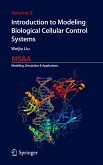The second edition of Mathematics as a Laboratory Tool reflects the growing impact that computational science is having on the career choices made by undergraduate science and engineering students. The focus is on dynamics and the effects of time delays and stochastic perturbations ("noise") on the regulation provided by feedback control systems. The concepts are illustrated with applications to gene regulatory networks, motor control, neuroscience and population biology. The presentation in the first edition has been extended to include discussions of neuronal excitability and bursting, multistability, microchaos, Bayesian inference, second-order delay differential equations, and the semi-discretization method for the numerical integration of delay differential equations.
Every effort has been made to ensure that the material is accessible to those with a background in calculus. The text provides advanced mathematical concepts such as the Laplace and Fourier integral transforms in the form of Tools. Bayesian inference is introduced using a number of detective-type scenarios including the Monty Hall problem.
"Based on the authors' experience teaching biology students, this book introduces a wide range of mathematical techniques in a lively and engaging style. Examples drawn from the authors' experimental and neurological studies provide a rich source of material for computer laboratories that solidify the concepts. The book will be an invaluable resource for biology students and scientists interested in practical applications of mathematics to analyze mechanisms of complex biological rhythms."
(Leon Glass, McGill University, 2013)
Every effort has been made to ensure that the material is accessible to those with a background in calculus. The text provides advanced mathematical concepts such as the Laplace and Fourier integral transforms in the form of Tools. Bayesian inference is introduced using a number of detective-type scenarios including the Monty Hall problem.
Review:
(Leon Glass, McGill University, 2013)
Dieser Download kann aus rechtlichen Gründen nur mit Rechnungsadresse in A, B, BG, CY, CZ, D, DK, EW, E, FIN, F, GR, HR, H, IRL, I, LT, L, LR, M, NL, PL, P, R, S, SLO, SK ausgeliefert werden.
"This book, written in an engaging and intuitive style, is aimed at undergraduate biology students; its primary goal is to provide a clear, comprehensive overview of the appropriate mathematical instruments for data collection and analysis, both deterministic and stochastic. ... the book also has the stated goal of contributing to a better shaping of the curricula for undergraduate biology education towards a better coverage of analytic, mathematical and computational methods." (Paul Georgescu, zbMATH 1319.92001, 2015)



